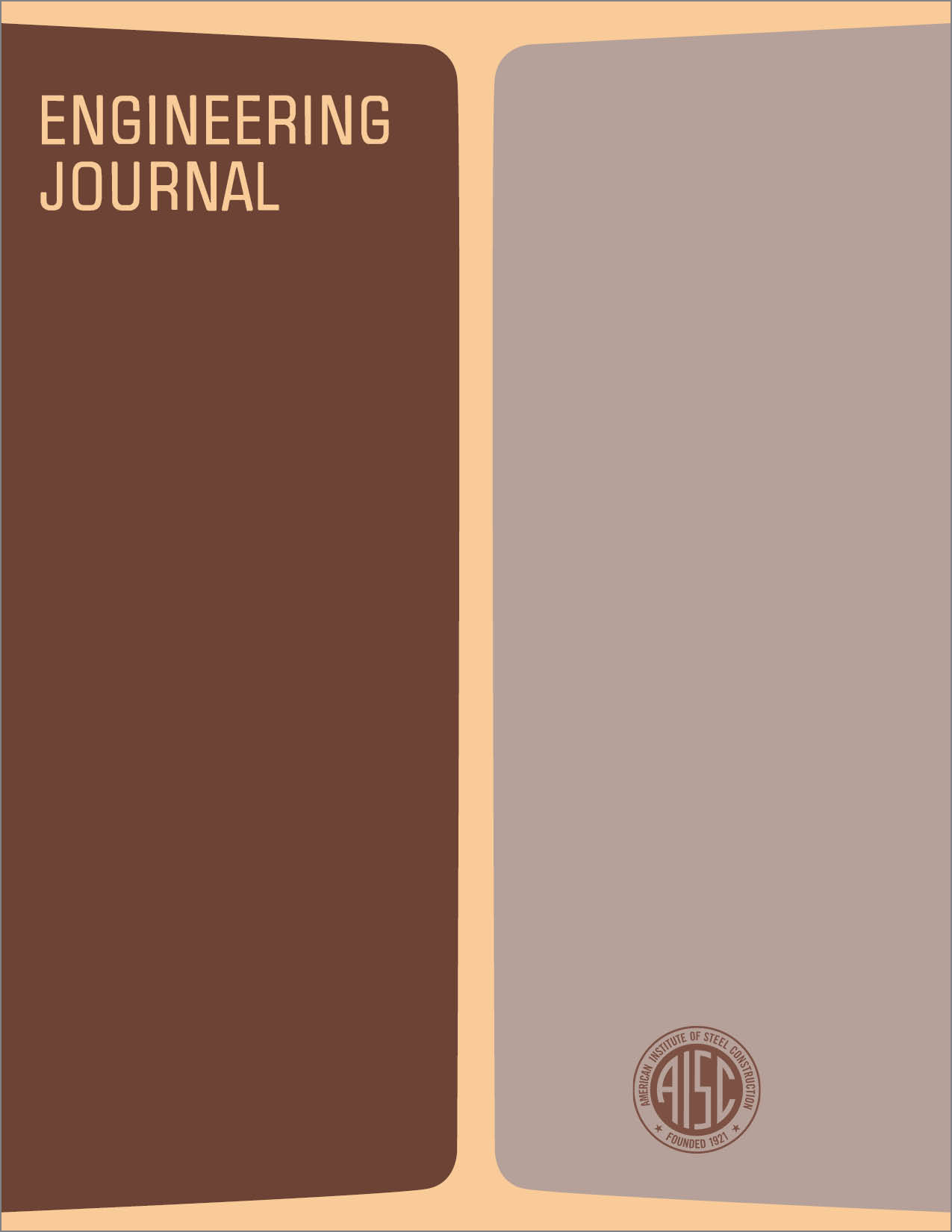LRFD Analysis and Design of Beams with Partially Restrained Connections
DOI:
https://doi.org/10.62913/engj.v22i4.452Abstract
It has been well established that connections considered to be simple, non-restraining connections have some predictable amount of moment capacity. Goverdhan has collected many of the moment-rotation curves for these so-called simple connections and derived expressions for prediction of the moment rotation curve characteristics. Through LRFD, a mechanism for designing structures using the predictable amount of connection restraint is now available. The purpose of this paper is to show how, using the moment rotation curves for single-plate framing connections and LRFD design techniques, a system of beams can be designed utilizing, without any change in the simple connection, its natural end restraint to reduce the size and deflection of beams with this type of connection. One actual design application for such a design procedure is in the design of roof purlins where purlins cannot be continuous, but must frame into or between supporting members. Heretofore, in these cases simple-span purlins or expensive moment connections were used on the ends of the purlins to develop continuity to reduce deflections and beam sizes. This paper demonstrates that using the natural restraint of the so-called simple connection can reduce the size and deflection of a simply supported purlin. Although only the design of roof purlins with single plate shear connections is illustrated in this paper, the technique is general and can be applied to any set of beams using partially restrained (PR) connections with known moment-rotation characteristics.

